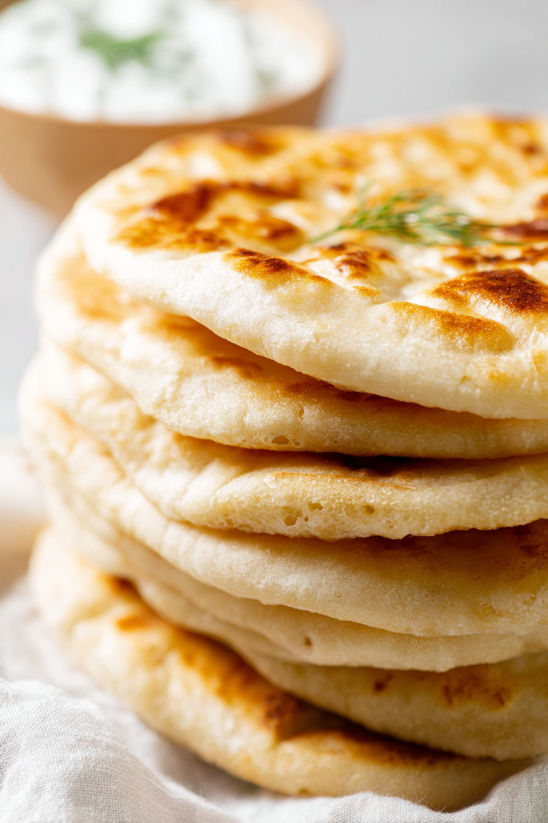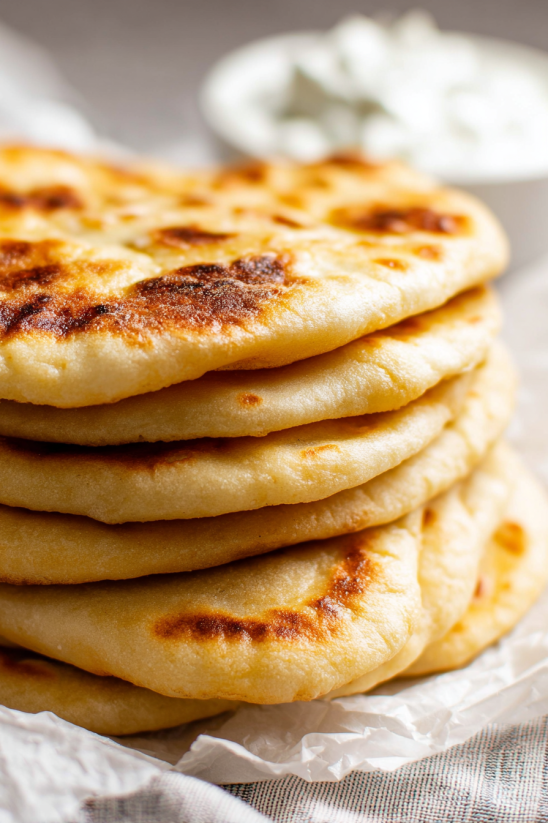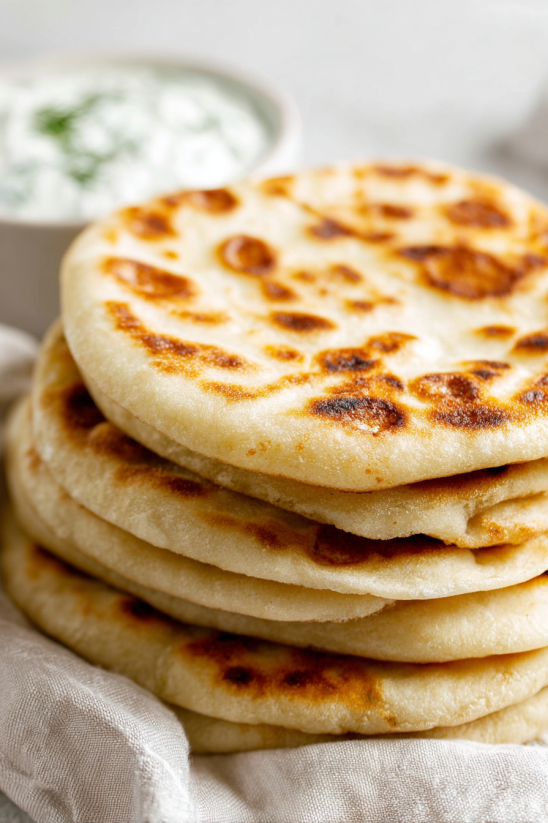 Save Pin
Save Pin
This easy homemade pita bread recipe brings soft, chewy pitas to your table in less than an hour, perfect for wraps, dips, or just tearing into while still warm. Once you see them puff up on a hot skillet, you may never go back to store-bought.
When I tried making these after years of buying from Greek delis in my neighborhood, I was amazed by how easy and fun it was. Now it is a weekend tradition to set aside a little time and make a fresh stack for my family.
Ingredients
- All purpose flour: gives classic soft texture and is easy to work with Look for unbleached for the best results You can blend in some whole wheat flour for extra flavor and nutrition
- Active dry yeast: helps the dough puff up beautifully Look for fresh packets and check expiration dates
- Granulated sugar: feeds the yeast and helps with rising You only need a little and any light colored sugar works
- Warm water: activates the yeast and binds the dough Use water that feels warm to touch but not hot
- Olive oil: adds flavor and keeps the bread tender Go with extra virgin or any mild oil for best results
Step-by-Step Instructions
- Activate the Yeast:
- Combine warm water with sugar and active dry yeast in a bowl Wait about five minutes until the mixture looks frothy and bubbles form on the surface This means the yeast is alive and working well
- Mix and Knead the Dough:
- Stir in the olive oil and salt Next add two and a half cups of flour Mix with a spoon or your hands and keep adding flour one spoon at a time until the dough comes together Pull the dough onto a floured surface and knead for ten to fifteen minutes It should turn smooth and elastic and slowly bounce back when pressed
- First Rise:
- Put the dough in an oiled bowl and cover with a kitchen towel Set in a warm spot for about one hour Check that the dough has doubled in size and feels puffy
- Divide and Rest the Dough:
- Turn the dough out onto a work surface Cut it into ten equal balls Cover the balls with a towel and let them rest and relax for twenty minutes
- Roll Out the Pitas:
- Roll each ball with a rolling pin into a six inch wide circle about a quarter inch thick The dough should stretch easily without snapping back
- Cook the Pitas:
- Heat a cast iron skillet over medium and brush lightly with oil Place a pita on the hot surface Cook for about thirty seconds then flip Cook another thirty seconds Flip once more and cook for up to one minute Look for bubbles and a puffed up center It is normal if some do not puff all the way they will still be soft
- Keep Warm:
- Stack cooked pitas and wrap in a warm towel or foil to hold their heat Keep them covered until all pitas are cooked
 Save Pin
Save Pin
One of my favorite ingredients is the olive oil which gives each pita a subtle flavor I sometimes add a touch more for a richer taste Choosing a good olive oil made my pitas taste almost as good as the ones I remember from Greek festivals with my family
Storage Tips
Let pita breads cool completely before storing Stack and wrap tightly in plastic or a zip top bag They stay fresh on the counter for two to three days For longer storage pop extra pitas in the freezer and reheat in the oven or toaster
Ingredient Substitutions
Whole wheat flour can be swapped for half the flour if you want a nutty flavor If you do not have olive oil another mild oil such as sunflower or avocado works fine Instant yeast can be used but skip the proofing step and mix it directly into your flour
Serving Suggestions
Serve warm pitas stuffed with falafel or grilled chicken Cut into triangles for dips like hummus or baba ganoush I love using them instead of tortillas for wraps or even as a crust for quick flatbread pizzas
 Save Pin
Save Pin
Cultural and Historical Context
Pita bread is a beloved staple in Middle Eastern and Mediterranean cuisines The magical puff in the skillet is what creates its signature pocket making it ideal for stuffing or scooping Traditionally these breads have brought families together for generations
Commonly Asked Questions
- → What flour works best for soft pita bread?
All-purpose flour yields light, puffy results, but you can substitute part or all for whole wheat for added flavor and nutrition.
- → How do I get my pitas to puff up?
Roll dough evenly and cook on a properly heated skillet. High heat activates the steam for the signature pocket.
- → Can I knead the dough by hand?
Yes. Hand-kneading provides a smooth, elastic dough, but a stand mixer will also work for easier preparation.
- → How should I store leftover pita?
Cool completely, then keep in a sealed bag at room temperature for up to two days or freeze for longer storage.
- → What can I serve with pita bread?
Enjoy with hummus, tzatziki, grilled meat, used as sandwich bread, or dipped in soups and stews.
- → Can I add flavors to the dough?
Absolutely! Mix in herbs or spices such as za’atar, garlic powder, or dried oregano for new twists.
